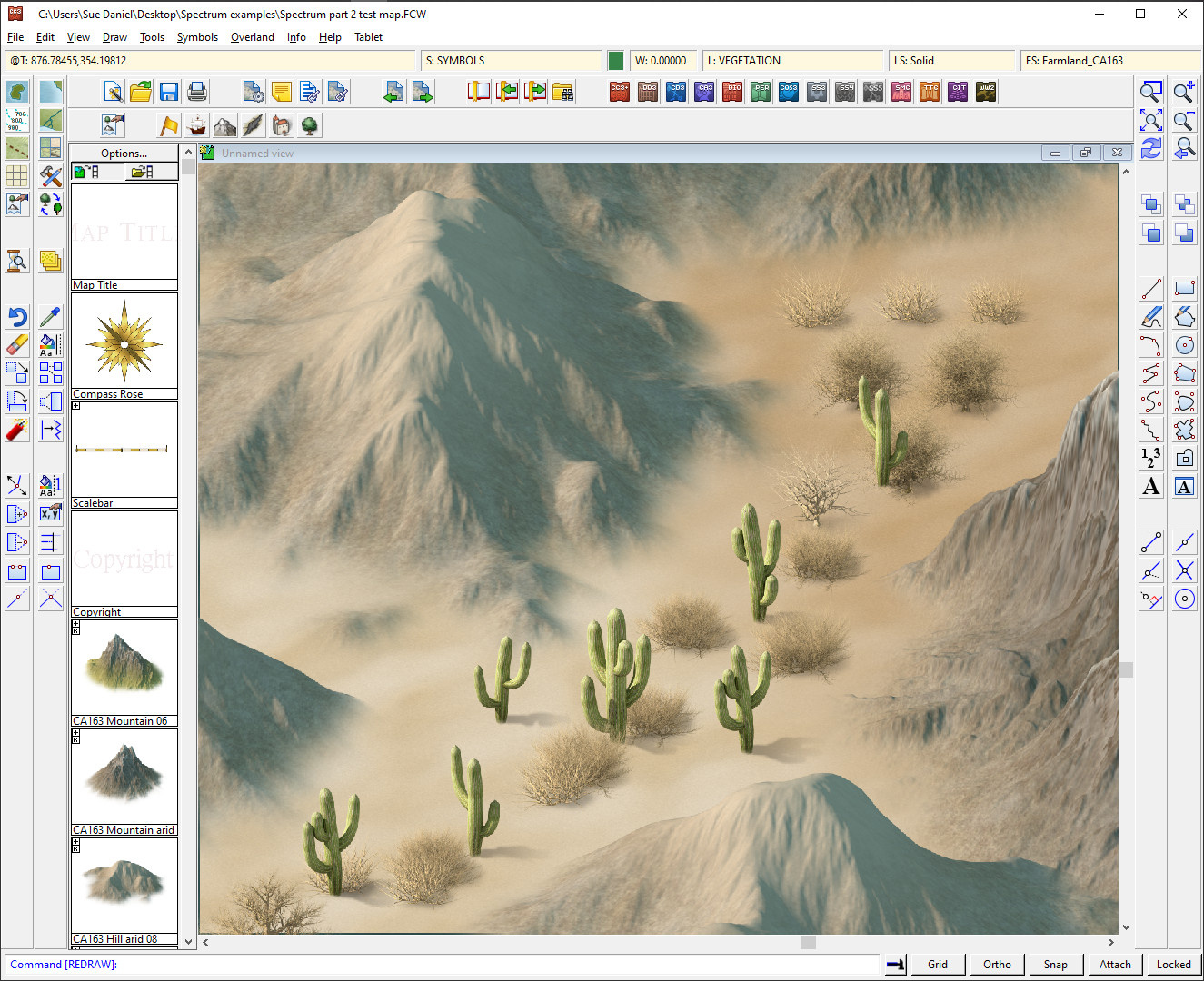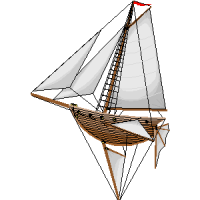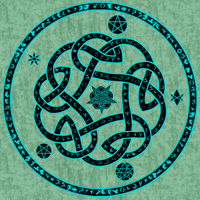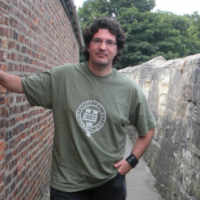Project Spectrum - Part 2
 Loopysue
ProFantasy 🖼️ 41 images Cartographer
Loopysue
ProFantasy 🖼️ 41 images Cartographer
Hi Everyone :)
I'm in the middle of work on Spectrum Part 2, and I'd rather like to know what you think about the desert vegetation I've been making.
Tagged:










Comments
Looks good to me.
Those look absolutely stunning
Oh Sue... These are gorgeous!
Thank you very much, everyone! :D
Nice. I think you should include Joshua Trees.
What's a Joshua tree, Mike?
And the moment I made that comment I saw your edit and the image link.
Thanks - I'll think about it. We'll see how much time I have left when I've done the core symbols :)
They are a type of cactus, but as you can see from the photo they more resemble trees.
They are actually related to lilies...(spelling?)
Really ? I never knew that. I thought they were part of the cacti family.
What about spinifex and prickly acacia (originally from North Africa, now a pest in desert Australia, but camels love them). And giant termite mounds - very plentiful in Aussie deserts.
Thank you, Quenten :)
I will think about it, but as I said above I have to finish the core set of symbols first, and part 2 is due out in the November issue.
Actually, things have changed since I learned that. From the Joshua Tree National Park Website:
https://www.nps.gov/jotr/learn/nature/jtrees.htm
Known as the park namesake, the Joshua tree, Yucca brevifolia, is a member of the Agave family. (Until recently, it was considered a giant member of the Lily family, but DNA studies led to the division of that formerly huge family into 40 distinct plant families.) Like the California fan palm, Washingtonia filifera, the Joshua tree is a monocot, in the subgroup of flowering plants that also includes grasses and orchids. Don’t confuse the Joshua tree with the Mojave yucca, Yucca schidigera. This close relative can be distinguished by its longer, wider leaves and fibrous threads curling along leaf margins. Both types of yuccas can be seen growing together in the park. The Joshua tree provides a good indicator that you are in the Mojave Desert, but you may also find it growing next to a saguaro cactus in the Sonoran Desert in western Arizona or mixed with pines in the San Bernardino Mountains.
So, neither a Lily nor a Cactus.
My goodness!
What a lot of interesting information. And after all that I'm not even sure if I will have time to do any of these extra things, but we shall see.
Monocot eh ? Sounds like it is related to manicotti.
Agave, so.. Tequila!
LOL!
Cheers!
Lovely saguaro! Reminds me of my home in Spring of '13, Scottsdale, AZ. LOVE the desert. Looking forward to these!!
Thanks Lorelei ?
If you like them, then I know I've got them mostly right ?
I'd say you're spot on.
Thanks again, Lorelei!
That photo has enabled me to make a final choice about the colour adjustment of my symbols - 7 tiny notches less yellow than they were, and looking good.
But I won't bore everyone with another image of just the cacti. I hope to have some more new stuff to show off later today.
I love what you have done with the texture of the mountain slopes. I think I'm going to use it as a Blend texture resource for cliff sides.
Go ahead. Post them.
I grew up with prickly pear and barrel cacti. The later were small, about 3" to 6" tall cylinders. Prickly pear would be harder to make into a symbol. I think.
One thing you've noticed is that every desert has its characteristic flora. Even in the US west, the Mojave desert (joshua trees) is different from the Sonoran desert (saguaros and spiky trees) is different from the Chihuahuan desert (shrubs) is different from the general arid wastes full of nothing much interesting at all. Sure, they all are full of creosote bushes, but the big pretty things are all quite different.
I see that you've got spiky tree-looking things, and that's good. A varicolor one with the trunk as the colorable area would hit the palo verde (green bark), mesquite (dark bark), and smoke tree (light grey bark) types of things.
For peculiar charismatic deserty plants, I'm fond of Dracaena Cinnabari, but it's extremely limited in distribution. Welwitschia is another of the plants that's very specific to one locale, but is instantly recognizable. If you're planning to do palm trees, the fan palms and the pinnate palms are very different-looking beasts.
Yes, I realize that you're probably already fully booked up for thing to put into the set.
Those are the feet of the actual mountain symbols of the Spectrum Overland set, Dani. Thank you :)
They would be a bit too small, Jim, but I did think about it.
Joe - I'm not going to quote your entire comment, but that is very enlightening and a lot of food for thought. I had a discussion with Ralf recently where I explained that I might not have time to do the vari symbols. If any are done it will be Ralf's work, so if by happy chance he does have the time to do some I will show him your comment re the desert scrub plants. Thank you very much for your contribution :)
Having a generic "desert" is a hard one because that word means different things to different people. I was 40 years old before I saw a saguaro for the first time, despite living in an adjacent desert pretty much my whole life.
Well, I was looking at both the desert trees and thinking that with ngplant if I could just get one about right a few tweaks with phototropism and inclination would give me the other one, so I might be able to do a couple of Joshua trees and some Dracaena Cinnabari - but quickly add to that comment that I'm not entirely sure this is going to work.
I'll give it this evening and see if I can make this strange finger thing look a bit like one or the other of them. Think positive thoughts! This is very much how the saguaro symbols started out.
It's a sideways organ pipe cactus! To a first approximation, an organ pipe cactus is a barrel cactus with a bit of a glandular disorder and a lot of friends; a saguaro is an organ pipe cactus that's lost control of some of its lateral buds so that they grow sideways. Similarly, the yuccas (and agaves and the big dracaenas) are a spiky ground plant that figured out how to grow a little bit of stem between each leaf.
It's sort of getting there now. I just have to get the hedgehogs out of the top of the tree.
@Loopysue ...and one day you will teach us how to handle all the other programs to create amazing stuff ?
@WeathermanSweden Oh wow! That's seriously cool! I didn't know you could tag people like that! I only just found out that Remy has updated the forum already to allow full screen shot pasting direct (see above).
I learn what I need to know about CC3 from this forum and the PF staff. And I learn everything else about other apps by searching for apps that will do specific jobs, then watching YouTube videos ;)
ngPlant (the software I am using to model the trees and speed up the process a bit) is available here: http://ngplant.org/
There is a YouTube video, but I can't seem to locate it right now.